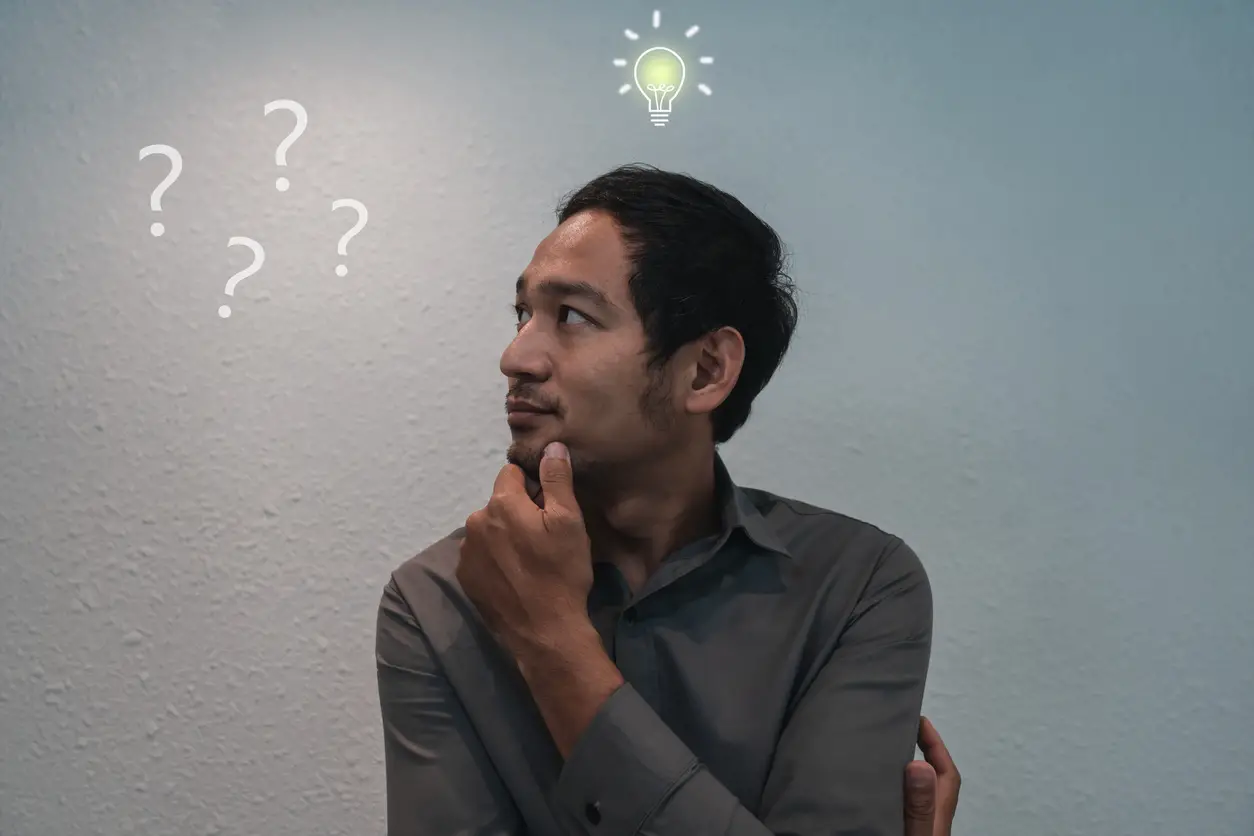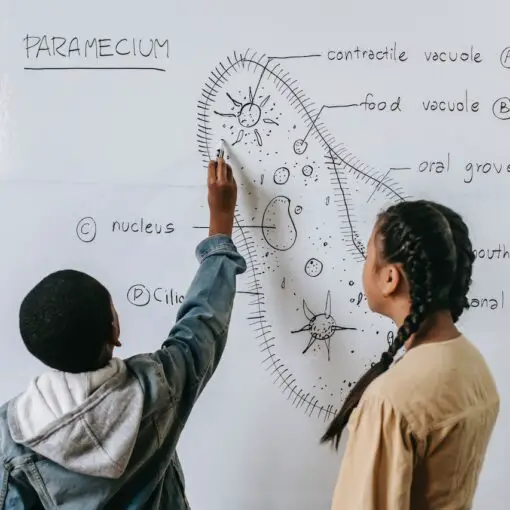Non-scientific thinking refers to methods of exploring knowledge and understanding without adhering strictly to the processes of the scientific method. A wide range of fields, including philosophy, religion, and the arts, often employ non-scientific approaches to uncover truths and generate ideas. These alternative methods can be distinguished by their reliance on intuition, emotions, tradition, and authority, rather than the objective, systematic processes found in scientific research.
While the scientific method emphasizes experimentation, observation, and testability, non-scientific thinking often relies on logical reasoning and problem-solving skills outside the confines of structured research. Such approaches can be seen in various aspects of everyday life, as people draw from their beliefs, experiences, and perspectives to make sense of the world around them. Despite the differences, both scientific and non-scientific thinking contribute to our collective understanding of the world and shape the way we approach knowledge.
Key Takeaways
- Non-scientific thinking is an exploration of knowledge without strictly following the scientific method.
- Methods such as intuition, emotion, tradition, and authority are commonly employed in non-scientific thinking.
- Non-scientific thinking contributes to our collective understanding of the world and influences how we approach knowledge in everyday life.
Understanding Non-Scientific Thinking
Non-scientific thinking is a way of acquiring knowledge and understanding the world without following the scientific method. This approach relies on various means, such as intuitive knowledge, gut feelings, and instinct, to form beliefs and make decisions. Unlike the scientific method, which is grounded in empirical evidence, non-scientific thinking may not be as rigorous or systematic.
Intuitive knowledge is a form of non-scientific thinking that taps into our innate understanding of the world. We often use intuition for quick decision-making and problem-solving when time is limited or information is sparse. In these situations, heuristics, or mental shortcuts, provide a framework for making these rapid choices. However, relying solely on intuition and heuristics can be problematic, as it may introduce bias and lead to flawed conclusions.
Gut feelings, another aspect of non-scientific thinking, come from our emotional responses and internal compass, guiding our choices and actions. While they may be grounded in our experiences, they lack the logical and systematic approach of scientific thinking. Trusting solely in gut feelings can lead to hasty or ill-informed decisions, as emotional reactions may not accurately assess the situation.
Instincts, a primitive form of non-scientific thinking, are inherited, hardwired behavioral patterns that have evolved to ensure survival and reproduction. They serve as an automatic response to specific stimuli, such as the fight-or-flight response to a perceived threat. Although instincts can be beneficial in certain circumstances, relying on them in complex situations may not be the most effective approach, as they do not take into account multiple factors and possible consequences.
Non-scientific thinking is also susceptible to various biases, which can distort our perception and lead to erroneous conclusions. For example, confirmation bias causes individuals to seek information that supports their pre-existing beliefs while ignoring or dismissing contradicting evidence. This type of thinking can prevent people from objectively evaluating a situation and contribute to dogmatic or irrational viewpoints.
In summary, non-scientific thinking encompasses a range of approaches that do not strictly adhere to the scientific method. While intuitive knowledge, gut feelings, and instincts can sometimes provide valuable insights, these methods lack the rigor and systematic approach of scientific thinking. Recognizing the limitations and biases inherent in non-scientific thinking is essential for making well-informed decisions and fostering a balanced understanding of the world.
Contrasting Scientific and Non-Scientific Approaches
Scientific and non-scientific approaches to acquiring knowledge can often result in differing conclusions about the world we live in. Understanding these two approaches can help us appreciate the strengths and limitations of each.
The scientific method is based on systematic observation, experimentation, and testing hypotheses. It aims to generate scientific knowledge that is testable, replicable, and falsifiable. Using this approach, researchers draw conclusions based on empirical evidence and adjust their theories according to the data collected. The scientific method emphasizes objectivity and relies on quantifiable, controlled experiments to reach conclusions.
On the other hand, non-scientific approaches to knowledge acquisition often rely on personal experiences, intuition, beliefs, or anecdotes. These approaches may not depend on testable evidence or strict methodology. While non-scientific approaches can contribute to the understanding of the world, they might be less rigorous and prone to bias or overgeneralization. For example, someone may rely on their intuition to solve a problem, but this approach may not provide an accurate, consistent solution to a similar situation.
A critical distinction between scientific and non-scientific approaches lies in the ability to test and verify claims. In the scientific method, assertions must be testable and based on evidence. When new information is encountered, a scientific theory may be revised to better suit the facts. This continuous refinement of theories ensures that scientific knowledge stays reliable and up to date.
In contrast, non-scientific approaches may adhere to traditional beliefs or emotional reasoning without subjecting these ideas to rigorous testing. This can often lead to assertions that may not be accurate, as they remain unchallenged by empirical evidence.
Therefore, distinguishing between scientific and non-scientific approaches is essential when seeking reliable knowledge. While both approaches have their merits, the scientific method provides a more rigorous, testable, and systematic way of understanding the world around us. By appreciating the differences between these two approaches, we can make informed decisions and recognize the value of well-founded scientific knowledge.
Role of Logical Reasoning
Logical reasoning plays a crucial role in differentiating non-scientific thinking from scientific thinking. Non-scientific thinking is primarily driven by subjective opinions, personal biases, and emotional responses. In contrast, logical reasoning forms the basis of scientific thinking, which demands a systematic and objective approach to understanding and explaining phenomena.
In the process of logical reasoning, individuals observe and analyze phenomena, reactions, and feedback, and then draw conclusions based on the information they gather. This form of reasoning relies on premises and relations between them in order to determine valid and sound conclusions. There are different forms of logical reasoning recognized in philosophy of science and artificial intelligence, including inductive, deductive, and abductive reasoning, among others.
Developing a logical reasoning skill set is vital not only for scientific endeavors but also for everyday life decision-making and problem-solving. In the context of science, logical reasoning is often employed to develop a hypothesis or a testable prediction. Such hypotheses can then be subjected to experimental tests, the results of which are used to further refine the hypotheses or develop new ones. The iterative process of hypothesis formulation, testing, and revision forms the backbone of scientific inquiry.
By emphasizing logic, critical thinking, and objective analysis of evidence, logical reasoning helps scientists avoid the pitfalls often associated with non-scientific thinking, such as jumping to hasty or unwarranted conclusions. Furthermore, it allows scientists to identify inconsistencies and contradictions in their work, fostering a more rigorous and reliable understanding of the world around them.
To summarize, the role of logical reasoning is essential in ensuring that scientific thinking remains focused on objective, testable, and verifiable principles. By relying on a rigorous approach to analysis and inference, scientists can develop a continually evolving body of knowledge that reflects the complexity of the natural world.
Importance of Observation
Observation plays a crucial role in not only scientific research but also in non-scientific thinking. It is the process of gathering information about a phenomenon or subject using our senses, forming the basis for knowledge and understanding. In non-scientific thinking, observation allows individuals to draw conclusions about the world around them based on their personal experiences and insights.
Observation is essential for researchers to examine patterns, behaviors, and occurrences in their environment. By paying close attention to the details, they can make connections and identify correlations that may not be apparent otherwise. This is particularly important in non-scientific thinking, where individuals often rely on intuition, personal experience, and reflection to understand a phenomenon.
Observations can be either qualitative or quantitative, depending on the type of information being collected. Qualitative observations are concerned with the attributes, properties, or characteristics of a subject, while quantitative observations focus on measurements and numerical data. In non-scientific thinking, it is common for individuals to emphasize the qualitative aspects of their observations, as they are typically more concerned with understanding the essence and nature of a phenomenon rather than its numerical properties.
Moreover, non-scientific thinking often involves observing situations or phenomena from multiple perspectives, allowing one to build a more holistic and comprehensive understanding of the subject matter. This process encourages individuals to consider different interpretations and viewpoints, nurture their creativity, and develop critical thinking skills.
Lastly, observation is integral to the growth and evolution of non-scientific thinking. As individuals continue to observe the world around them, they refine their understanding of various phenomena, adapt their beliefs, and incorporate new insights into their knowledge base. Thus, observation remains a vital component of the non-scientific thinking process, enabling continuous development and learning.
Influence of Tradition and Authority
When considering non-scientific thinking, it is essential to understand the role that tradition and authority play in shaping beliefs and opinions. Tradition, in this context, refers to the passing down of cultural knowledge, customs, and practices from previous generations. Authority, on the other hand, concerns the power vested in individuals or institutions due to their societal status, expertise, or perceived wisdom.
Tradition often influences non-scientific thinking by providing the framework in which people accept certain beliefs, norms, or practices. For instance, many individuals adhere to traditional medicine or folklore without questioning their validity based on scientific evidence. This tendency can be attributed to the strong attachment to cultural heritage, communal identity, and the influence of elders in societies emphasizing the importance of tradition.
Authority plays a significant role in non-scientific thinking as well. People tend to rely on political leaders, religious figures, and cultural icons for guidance and advice on various aspects of life, including matters on which they may not possess scientific expertise. In some cases, the public can uncritically accept information from authoritative figures, overlooking the need for empirical evidence or critical questioning.
The relationship between tradition and authority can be further intertwined in the realms of political and public life. Traditional beliefs and practices can influence political decisions by affecting public opinion and the priorities of decision-makers. For example, policy initiatives on environmental conservation or public health may be hindered if they are perceived to conflict with long-standing traditions and the interests of influential authority figures.
In summary, the influence of tradition and authority on non-scientific thinking can manifest in various ways, affecting individual beliefs, cultural practices, and even political and public decisions. Encouraging critical thinking and open-mindedness, along with the ability to question long-held assumptions, is key to minimizing the negative impacts of tradition and authority on decision-making and embracing a more balanced, evidence-based approach to understanding the world.
Experimentation and Testability
In non-scientific thinking, experimentation and testability might not adhere to the strict principles found in scientific approaches. Unlike scientific research, non-scientific research may not follow the scientific method or rely upon controlled experiments for acquiring knowledge. However, non-scientific thinking can still involve practical knowledge and experience that contribute to our understanding of the world around us.
Experimentation in non-scientific thinking might not take place in a lab, but it can still involve observing and interacting with various phenomena. For example, artisans working with materials such as wood, metal, or fabric may gain insights into their craft through practical experience and informal experimentation. This hands-on approach, though not scientific, can still foster new knowledge and understanding in various fields.
Control and replication, which are essential components of scientific research, might not be as rigorously applied in non-scientific thinking. In some cases, non-scientific research can be more flexible in its pursuit of knowledge, allowing for more fluid and creative approaches. Nevertheless, the absence of strict controls and reproducibility can also limit the reliability and validity of non-scientific conclusions.
Non-scientific thinking may employ models to describe or explain phenomena, but these models might not be testable or falsifiable in the same way as scientific models. For example, mythological explanations for natural events might offer a poetic or metaphorical understanding, but they would not hold up under the standards of testability in scientific inquiry.
Overall, non-scientific thinking provides an alternative way of engaging with and exploring knowledge, but it does not always adhere to the principles of experimentation, testability, and control found in scientific research. While both non-scientific and scientific thinking have their respective strengths and limitations, they can still coexist and contribute to our collective understanding of the world in unique ways.
Emotions and Intuition in Non-Scientific Thinking
Emotions and intuition play a substantial role in non-scientific thinking. These factors often influence decision-making and problem-solving in ways that are not solely based on empirical evidence or logical reasoning. In this context, affect, experience, and intuition intermingle with emotional reactions to shape an individual’s thought process.
Affect refers to the emotional response one may have to various stimuli or situations. This emotional state can impact the way they perceive and interpret information. For instance, a person might be more likely to believe information that aligns with their current emotional state, leading to biases and distortions in their conclusions.
Intuition, on the other hand, is a way of thinking that relies on pattern-matching and the ability of the mind to quickly search its experience stored in long-term memory for similar situations or solutions. As the mind does so, it forms a sense of understanding, guiding an individual’s actions without the need for conscious rationalization. This process is often characterized as a “gut feeling” or an instantaneous perception of a situation.
Despite being a component of non-scientific thinking, intuition is not inherently negative or unscientific. In some cases, intuition can complement logical thinking and even lead to creative insights or innovative ideas. However, it is crucial to recognize that relying solely on intuition may result in biased, incomplete, or even incorrect conclusions.
Experience also significantly affects non-scientific thinking, as it shapes an individual’s perception of the world and their reactions to new situations based on past events. This experiential knowledge can be valuable, but it is subject to limitations and personal biases. Emotions can also influence these experiences, either positively or negatively, and may affect the objectivity of the perception.
In conclusion, emotions and intuition are integral aspects of non-scientific thinking, providing valuable insights but also posing potential pitfalls. A balanced approach that combines emotional intelligence, experience, intuition, and logical reasoning is crucial for accurate thinking and well-informed decisions.
Problem-Solving Through Non-Scientific Thinking
Non-scientific thinking is a way of understanding and interpreting the world without employing the scientific method. This approach to problem-solving often relies on intuition, experience, and subjective reasoning. It can be a useful tool in addressing practical problems and making decisions in various aspects of life.
In many cases, individuals use non-scientific thinking to solve problems that do not require rigorous investigation or detailed data analysis. For example, deciding which route to take to work or selecting the best color for a website design can be accomplished through intuition and personal experience, rather than a systematic approach based on objective criteria.
Considering practical scenarios, one might tackle everyday problems by drawing on previous experiences. For instance, if a person encounters a leaky faucet, they might recall a similar situation and apply the solution they used before. Non-scientific thinking, in this case, allows the person to rely on their own knowledge and address the issue promptly, without delving into extensive research or experimentation.
Another aspect of non-scientific thinking in problem-solving is the ability to utilize critical thinking. Critical thinking involves evaluating claims and arguments, identifying inconsistencies, and making informed judgments based on available evidence. This skill can be applied across various contexts and plays a crucial role in effective decision-making in both personal and professional settings.
Lastly, non-scientific thinking can prove beneficial in situations where scientific research or data may not be accessible or applicable. For example, in small-scale settings or creative endeavors, relying on a combination of intuition, experience, and critical thinking can offer practical solutions that meet the desired end result. In these cases, non-scientific thinking bridges the gap and facilitates problem-solving effectively.
Nonscientific Approaches in Everyday Life
Nonscientific thinking is common among laypeople and even within certain aspects of the public sphere. It involves making decisions and forming beliefs without adhering to the rigor or methodology of the scientific process. Often, nonscientific thinking is influenced by personal experiences, emotions, and biases, which can shape an individual’s understanding of the world around them.
In everyday life, laypeople frequently rely on nonscientific approaches to make sense of their environments. These approaches might include intuition, personal testimonials, and anecdotal evidence. For example, someone might believe that a particular remedy cured their ailment simply because they felt better after using it, despite the absence of scientific evidence supporting the remedy’s efficacy.
The public is often exposed to nonscientific thinking through various channels, such as media, advertisements, and personal networks. Sensationalized stories, catchy headlines, and appealing anecdotes can make such information seem more convincing, even if it lacks scientific grounding. Additionally, misinformation and misconceptions can spread rapidly in the age of social media, leading to a further reliance on nonscientific thinking.
In some instances, nonscientific approaches can coexist with scientific understanding. For example, art, literature, and religion often provide unique perspectives and insights that complement scientific knowledge. However, it is crucial to recognize the limitations of nonscientific thinking in situations where empirical evidence and scientific rigor are necessary for making informed decisions.
By being aware of the differences between scientific and nonscientific thinking, individuals can better evaluate the information they encounter and make more informed choices in their daily lives. Recognizing the role of nonscientific approaches in everyday life is a crucial step in fostering critical thinking skills and promoting evidence-based decision-making.
Conclusion
Non-scientific thinking is characterized by a departure from the rigorous, systematic approach of the scientific method. Instead, this type of thinking relies on intuitive beliefs, anecdotal evidence, and personal experiences. While it may lead to conclusions or predictions, these are not based on well-founded evidence and can be prone to bias and error.
One example of non-scientific thinking is attributing outcomes to unrelated causes. An individual with a stomachache who eats a candy bar and subsequently feels better might conclude that the candy bar cured their ailment. However, without proper evidence or a controlled experiment, it’s impossible to establish a solid connection between the two events.
Even though non-scientific thinking is less reliable than its scientific counterpart, it’s worth mentioning that it can serve as a starting point for investigation and inquiry. For instance, a personal experience may inspire a curiosity that leads to further research and the eventual discovery of scientific evidence.
In conclusion, non-scientific thinking is an approach to knowledge that deviates from the structured, evidence-based practices of scientific research. While it may produce predictions or explanations, these are not founded on rigorous evidence. Nevertheless, this type of thinking can act as a catalyst for further inquiry and research, ultimately leading to a deeper understanding of the world around us.
Frequently Asked Questions
What distinguishes non-scientific methods of acquiring knowledge?
Non-scientific methods of acquiring knowledge rely on subjective experiences, intuition, authority, or tradition instead of the systematic, empirical, and logical methods used in scientific research. These methods do not follow the rigorous standards of scientific inquiry, such as hypothesis testing, controlled experiments, and analysis of results. While they may provide valuable insights, they are often susceptible to cognitive biases, errors, and inaccuracies in comparison to scientific methods.
How does non-scientific thinking differ from scientific research?
Non-scientific thinking differs from scientific research in several ways. Scientific research follows a systematic process that uses empirical data, logical reasoning, and rigorous testing to make evidence-based conclusions. This approach entails formulating hypotheses, designing experiments, collecting and analyzing data, and interpreting results to support or refute theories. In contrast, non-scientific thinking often relies on subjective experiences, intuition, and beliefs, lacking the same level of scrutiny, precision, and repeatability found in scientific research.
What role does non-scientific thinking play in psychology?
Despite its differentiation from scientific research, non-scientific thinking plays a role in psychology in various ways. For instance, subjective experiences, personal beliefs, and cultural factors can influence an individual’s behavior and perception of the world. Psychologists may explore these aspects to gain a more comprehensive understanding of human cognition and behavior. Moreover, some therapeutic approaches, like narrative therapy, may utilize non-scientific thinking to help clients explore their life stories and reframe their experiences in a more positive light.
How is non-scientific thinking applied in educational settings?
Non-scientific thinking can be applied in educational settings to foster creativity, critical thinking, and problem-solving skills. For example, arts and humanities courses often emphasize personal expression, interpretation, and appreciation, which involve non-scientific thought processes. Additionally, cultural, historical, and social perspectives can help students understand multiple viewpoints and develop empathy. Engaging in non-scientific thinking allows students to explore diverse ways of knowing, complementing their understanding gained through scientific approaches.
Can you provide examples of non-scientific thought processes?
Examples of non-scientific thought processes include personal intuition, subjective experiences, anecdotal evidence, appeals to authority, and acceptance of traditions. For instance, relying on gut feelings, personal testimonies, or wisdom from cultural or religious leaders, rather than seeking empirical evidence or conducting systematic analysis, are all examples of non-scientific thinking.
What characteristics make a theory non-scientific?
A theory is considered non-scientific if it lacks empirical support, relies on subjective experiences, or is not open to falsification. Non-scientific theories may be based on cultural beliefs, personal testimonies, or appeals to authority rather than objective, systematic, empirical evidence. Additionally, a non-scientific theory may be resistant to change or modification, even in the face of contradictory evidence, leading to potential dogma or inflexibility. These characteristics distinguish non-scientific theories from those grounded in scientific research and inquiry.





